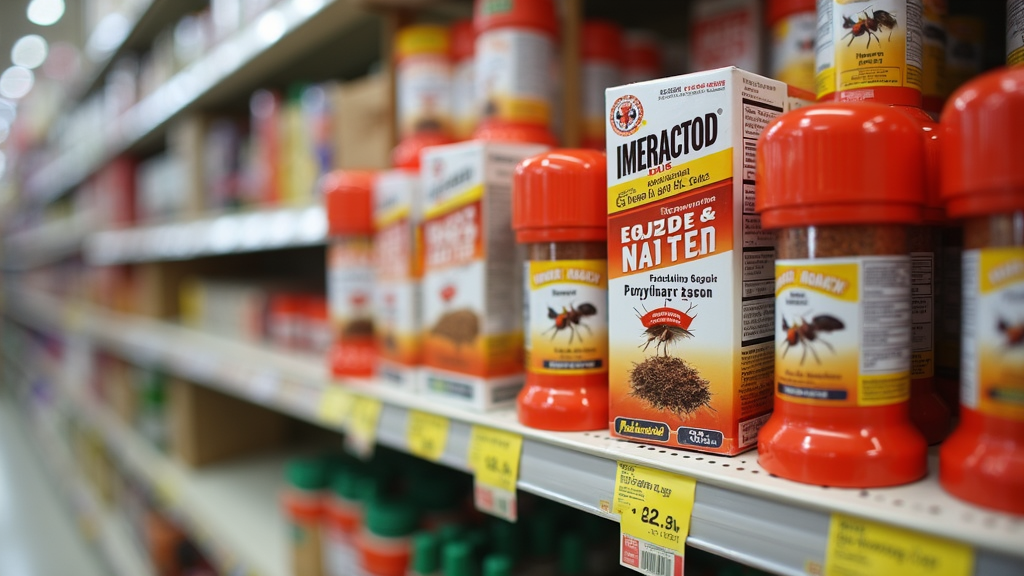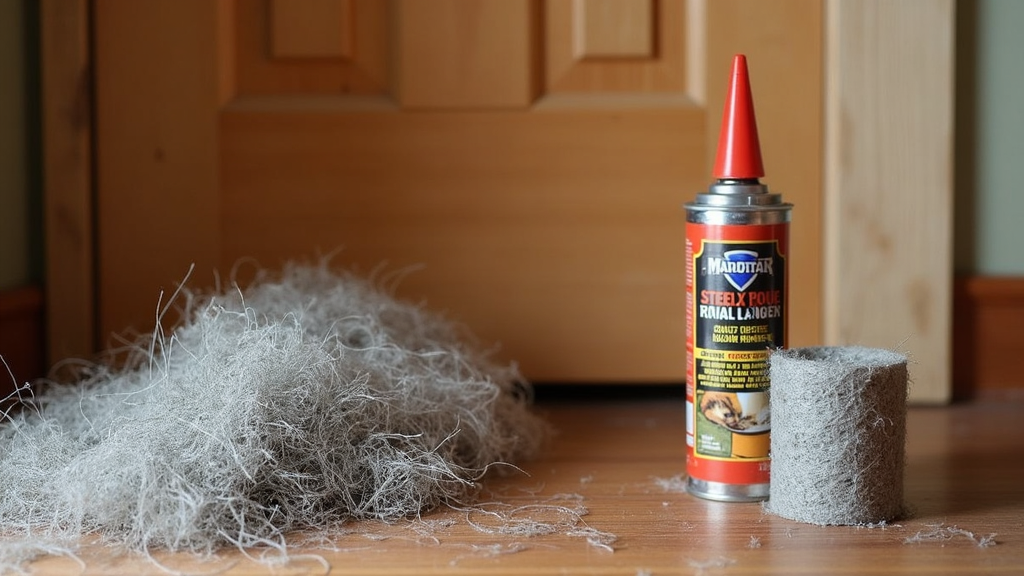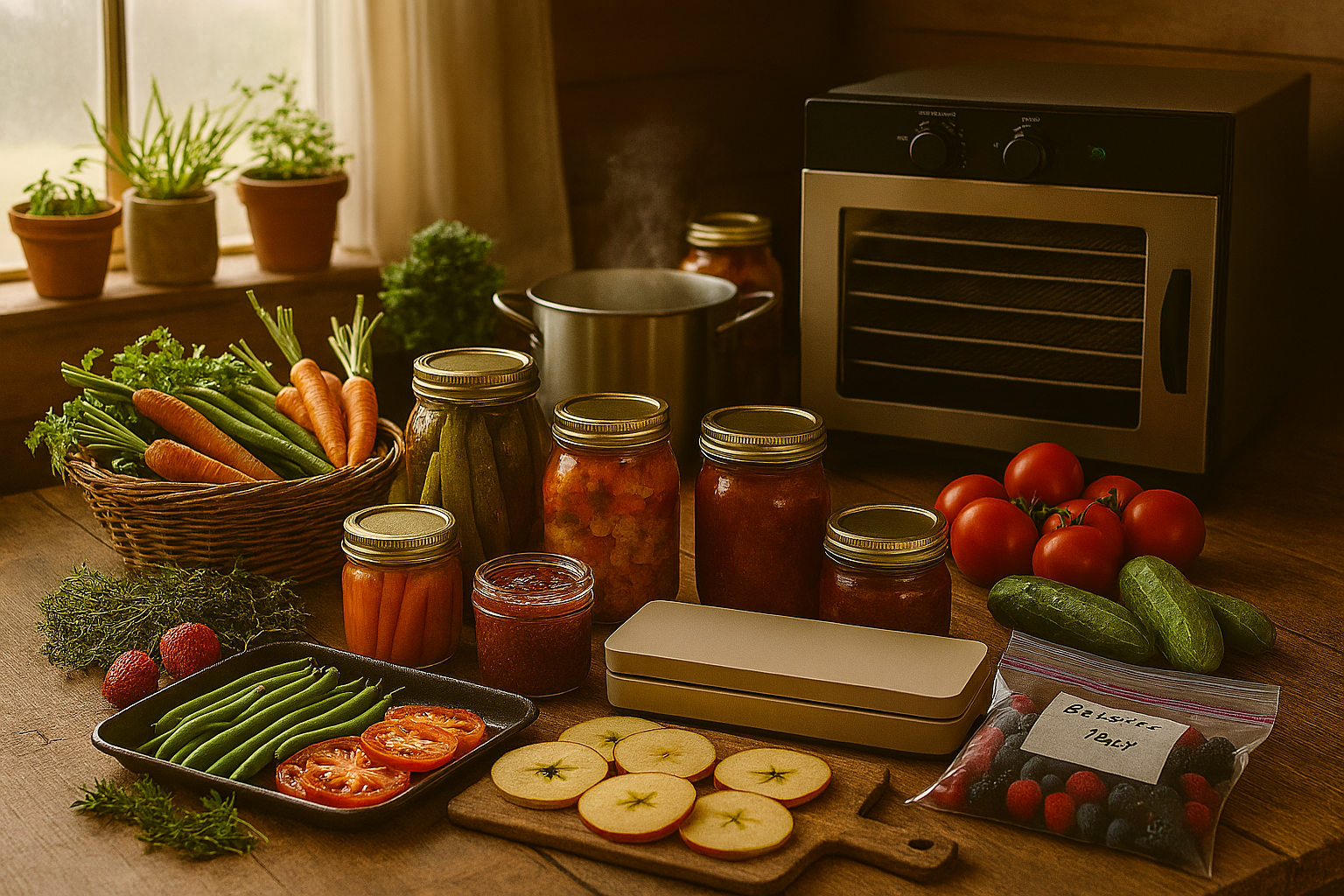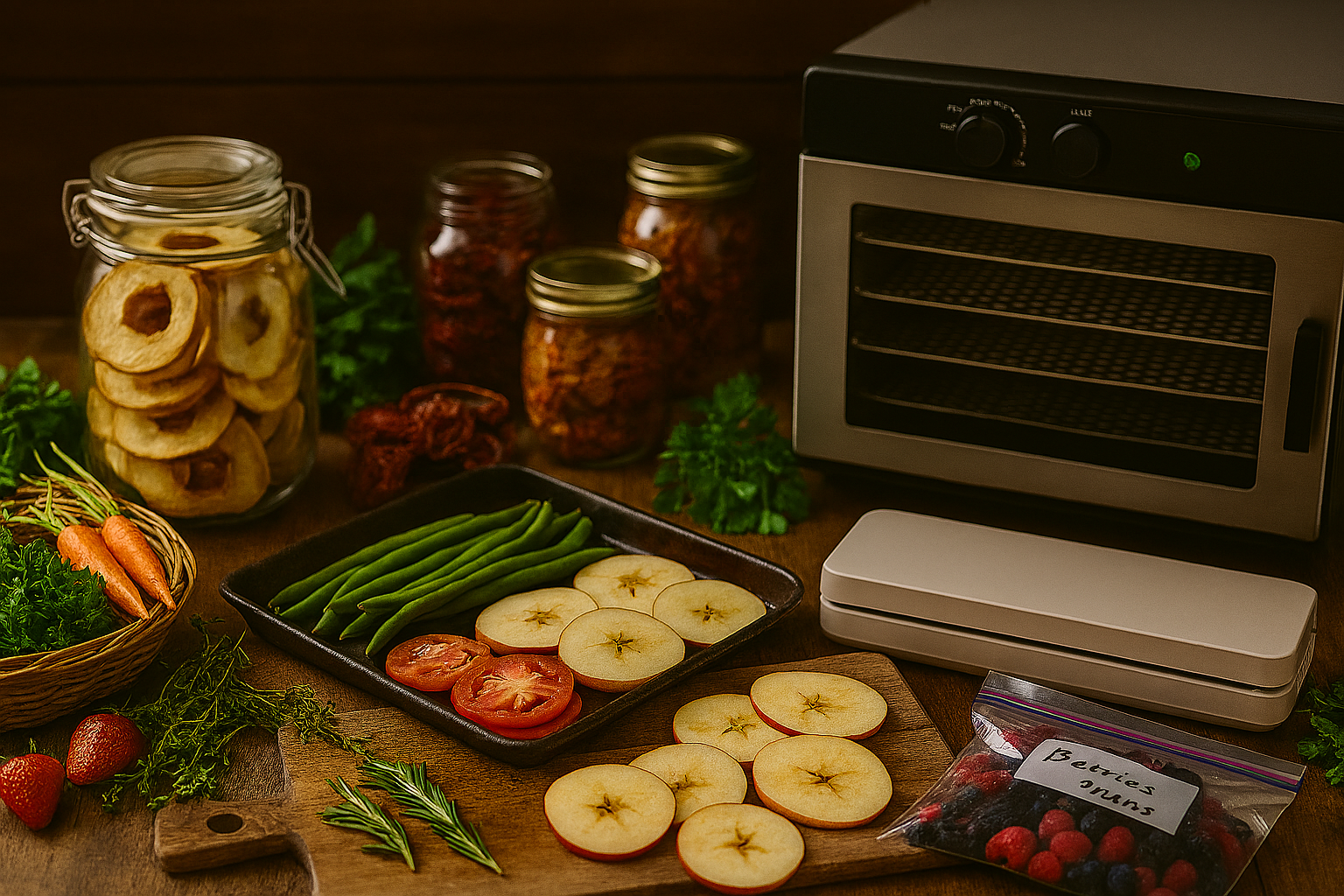Pest control supplies are a big topic every season, especially if you want to handle bugs or critters around the house without calling in the pros. Walking through your local hardware store, you’ll spot all kinds of products stacked up for every pest problem you can imagine—from sprays for ants to live traps for mice and even deterrents to keep raccoons away from your bins. Hardware stores are my go-to for stocking up on supplies to keep my home comfortable and pest free.
Here’s my quick breakdown of the types of pest control supplies you’ll find at hardware stores, plus answers to common questions about safe use, and tips for tackling the most annoying home invaders. Talking from experience, I can say that checking out all the options in person is great, as you get a sense of what could suit your home and get staff input if you’re ever stumped.

Store Name: Example Hardware
Website: examplehardware.com
Location: Across the country
Typical Price Range: $3 – $60 per product
Founded: 1985
Community: Neighborhood families, pet owners, DIYers
Overall Customer Rating: 4.7/5
Free In-Store Advice: Yes
Brands Carried: Raid, Ortho, Victor, Terro, D-Con, Safer, Hot Shot
Pet/Kid-Safe Options: Marked on packaging & staff available for advice
Free Demo Days: Sometimes; check the store event calendar for upcoming pest prevention workshops!
Hardware stores keep pest control pretty simple: you can grab exactly what you need whether you’re facing a stubborn ant colony or a new mouse in the basement. The nice thing is you don’t need to become an expert to pick the right product. There’s straightforward labeling for pests, areas (indoors or outdoors), and safety info right on the shelf, plus staff can steer you toward what works for your setup.
So here’s my full guide to covering your bases on pests—what to get, how to use supplies carefully (especially if you have kids or pets running around), and what works for most homes. Time to roll and check out what you’ll find in store.
About Hardware Store Pest Control Sections
When I first started dealing with pests, I’d spend way too long checking out aisles and reading boxes. Now I know most hardware store pest control sections break down into a few areas that match the most common problems folks face. Whether it’s ants, roaches, mice, or unwanted bigger animals, you’ll usually find these products grouped by pest (ants, rodents, flying insects, etc.), and by method (sprays, baits, traps, and so on).

I like to walk through these areas and look for clearly labeled packages so I know right away what pest each product targets. There’s also usually a “natural/green” section, which is growing every year as more people want safer alternatives for their families and pets.
Now let’s get into all the types of pest control supplies you might find and how they work. The options really come in handy if you’re trying to solve a sudden pest issue on your own terms.
Different Types of Pest Control Supplies Available at Hardware Stores
Hardware stores carry a pretty wide range of pest control options. I’ll walk you through the main types, along with some details and tips for getting the right match for your situation. Having so much variety in one spot means you can easily compare and match products to the specific challenges in your home.
Pesticide Sprays and Liquids
Pesticide sprays and liquids are what a lot of people grab first; they work fast and cover a broad area. You’ll find sprays for ants, roaches, spiders, wasps, flies, and even bed bugs. Most come in a ready to use form: just point and spray. Some are for indoor use, some for outdoor use, and a few are labeled for both (but always check before using indoors).
Tips:
- Always check the label for which pests a spray covers
- Look for pet and child safe labeling if you have little ones or animals in the house
- For serious infestations, sprays work best combined with baits or traps; sprays get the ones you see, but baits and traps target the hidden ones
Baits and Stations
Baits are my personal favorite for ants, roaches, and even mice. These come in preloaded, enclosed stations. Inside, there’s an attractant mixed with a poison that’s carried back to the nest by the pests themselves. This means it gets rid of the nest, not just what you see crawling around.
Types of baits:
- Ant bait stations
- Roach bait stations
- Rat or mouse bait blocks
Tips: Place baits out of reach of kids and pets (under furniture or behind appliances). Pet safe options are available; look for enclosed designs or natural ingredients if safety is your top priority.
Traps
Traps work for all kinds of pests, especially rodents, but also flies, wasps, and pantry moths. You’ll find classic snap traps, glue traps, electronic traps, and live catch traps at most hardware stores. If you want to go chemical free or see exactly what you’re catching, traps are a reliable choice.
- Rodent traps: Snap traps, glue boards, electronic zappers, and live catch cages
- Insect traps: Fly traps (sticky ribbons, UV light zappers, baited jars), moth traps for food storage areas, and wasp traps for yards and patios
Live catch traps can be a good pick if you want a humane approach, especially for mice or larger critters like squirrels or raccoons.
Repellents
Repellents work by creating a barrier or making environments that pests want to avoid. You’ll see sprays, granules, and ultrasonic plugins. The sprays and granules use natural or synthetic ingredients to repel insects, rodents, and sometimes even deer or raccoons outdoors.
Common repellent products at hardware stores:
- Rodent repellent pouches (with peppermint oil)
- Granular animal repellents for gardens
- Electronic ultrasonic repellents (results vary, but worth a try for small problems)
Pest Proofing and Exclusion Products
An underrated section in any hardware store’s pest aisle is all the stuff for blocking entry. This is where I always grab caulk, steel wool, door sweeps, and weatherstripping. Physical barriers are the best way to stop pests from getting in at all; prevention really makes a difference.
- Caulking or sealants for cracks, gaps, and baseboards
- Weatherstripping for doors and windows
- Steel wool or expanding foam for plugging rodent holes
- Fine mesh screens to patch holes and keep out flying insects
Garden and Yard Treatments
For pests outside, you’ll see supplies like granules, perimeter sprays, and baited traps for in the yard. These help stop ants, fleas, ticks, mosquitoes, and even moles before they get indoors. Most outdoor oriented products are clearly labeled to let you know if they’re safe for pets or edible gardens.
Natural and Ecofriendly Pest Control Supplies
If you prefer a more natural approach, hardware stores have been adding options every year. I often see:
- Essential oil based sprays (peppermint, cedar, clove oil, etc.)
- Diatomaceous earth; works on ants, roaches, fleas, and bed bugs by drying them out physically (safe when used as directed; not a chemical)
- Dusts and powders made from minerals or plant ingredients
Natural pest control is popular for families who worry about chemical residue around pets, kids, or food prep areas. New safe options appear in stores almost every season as more folks want less harsh solutions.
Different Types of Pests Found in Homes
Knowing what you’re up against really helps in picking the right hardware store pest control supplies. Here’s a quick look at the most common home invaders and how to spot them:
- Ants: Lines of tiny workers in your kitchen, bathroom, or basement; usually seeking food or water. Carpenter ants can cause structural damage if left unchecked.
- Mice and rats: Droppings, chewed items, scurrying sounds in walls or ceilings. Mice squeeze through tiny gaps; rats often show up in basements and garages. Rodents can cause notable messes and risk food safety at home.
- Roaches: Flat, oval shaped insects active at night, hiding in cracks, cupboards, or behind appliances. They need warmth and moisture and can multiply fast.
- Spiders: Webs in corners, basements, and closets. Most are harmless, but some (like the brown recluse or black widow) need attention fast.
- Flies: Buzzing around windows, especially in summer months. House flies and fruit flies are most common but equally irritating.
- Bees, wasps, hornets: Nests built in attics, under eaves, or in sheds. Yellow jackets and wasps get aggressive; bees are more mellow unless you block their hive or threaten their queen.
- Fleas and ticks: Tiny pests that bite pets and people, often brought indoors by dogs and cats. Both can trigger itching and discomfort.
- Silverfish and earwigs: Found in damp basements, bathrooms, or laundry areas. They thrive in moisture rich spaces and can spoil stored items if populations aren’t controlled.
- Pantry pests: Moths, beetles, or weevils found in flour, cereal, or nuts. They sneak in through packaging or sacks from the store.
Some pests, like ants and flies, are more annoying than dangerous. Others, like rodents or certain spiders, can cause bigger problems and need to be tackled quickly.
Pest Controls That Are Safe For Pets and Children
Safety comes first in my house, and hardware stores are getting better about offering petfriendly and kid safe pest solutions. Look for these on the shelves, and you’ll spot clear markings indicating which ones are safest for homes with little ones or furry friends.
Pet and Child Safe Pest Control Products
- Natural or organic sprays: Peppermint oil, cedar oil, or vinegar based repellents
- Diatomaceous earth (food grade): Dust works by drying out insects physically, with no chemical toxins
- Enclosed bait stations: Hard plastic shells keep bait out of reach (choose ones labeled pet and child resistant)
- Traps instead of chemical sprays: Sticky traps, snap traps, or live catch units are easy options
Products and Tips To Avoid if You Have Kids or Pets
- Rodenticides and loose baits: Toxic to all. Only use inside tamper proof stations, and keep behind appliances or in the attic well out of reach.
- Open glue boards: Animals and even kids can get stuck. Place these traps in enclosed and hard to reach spaces only.
- Aerosols or foggers: Ventilate rooms and keep everyone out for the time recommended on the label before returning.
- Powdered insecticides: Sweep up or vacuum loose powder after use, especially around children or pets.
I can’t say enough about reading the label on every product. Most hardware store pest control products have clear warnings about whether they are safe around pets, what precautions to take, and how to store them. Remember, even “natural” products should be handled with care and respect.
DIY Pet Safe Solutions from Hardware Store Supplies
- Steel wool or copper mesh to block rodent holes; totally safe for animals and people
- Plastic or glass food containers to keep pantry pests out of snacks and pet food
- Mesh or fine screens for windows and air vents to keep flying bugs outside
Always ask staff if you’re unsure about a product. I do this every time if I’m trying something new and want peace of mind. Better safe than sorry, especially where children or pets are involved.
Do I Need A Professional For Pest Control?
Some pest problems can get so tricky that it’s worth considering a pro, but most minor issues can be handled using the right hardware store supplies. Here’s how I figure out when to handle it myself and when it’s time to call someone in for help:
When DIY Pest Control Is Enough
- Small infestations (a few ants, one or two mice, occasional spiders)
- No evidence of major damage (no chewed wires, wall holes, or visible nests)
- You’re comfortable following instructions and safety steps
- Pest is identified clearly and isn’t potentially dangerous
With patience, the right supplies, and some preventive work, most home pest problems don’t need professional intervention. Plus, working through things yourself helps you learn what to watch for before a problem grows.
When To Call A Pest Control Professional
- Repeated or growing infestations despite your efforts
- Structural damage (from termites, carpenter ants, or rats)
- Wasp, bee, or hornet nests in hard to reach or risky places
- Bed bug or flea infestations that keep coming back
- Any time pesticides inside the home fail to solve the issue
- If you find pests that bite or sting and you’re not sure how to remove them safely
Most hardware store staff will let you know honestly when a job might be outside the reach of over the counter supplies; sometimes peace of mind from a pro is worth the price, especially if your family’s safety or the home’s structure might be at risk.
How to Keep Mice and Rats Out of Your Home
Rodents love sneaking in as colder weather starts, and hardware stores are well stocked with everything needed to keep them outdoors where they belong. Here’s my go-to method for keeping mice and rats out, year after year:
Seal Up Entry Points
- Stuff steel wool or copper mesh into small holes; rodents can’t chew through it
- Use expanding foam for bigger gaps; check for new holes every fall
- Add weatherstripping to doors and windows; the door sweep section at the hardware store is full of nifty fixes
- Patch basement window cracks using silicone caulk for a durable seal
Remove Food Sources
- Store dry goods in sealed containers (plastic, glass, or metal works best)
- Clean up crumbs and spills right away; don’t leave pet food sitting out overnight
- Take out trash often and keep bins tightly sealed to avoid giving rodents a reason to stay
Use Traps and Baits
- Place snap traps along walls where you see droppings or evidence of mice (behind appliances, near pipes, or in the attic)
- Live catch traps are great for homes with pets or if you prefer not to harm the rodents
- Bait stations go behind the fridge or inside cupboards; keep every item out of reach from pets and kids
Try Rodent Repellents
- Peppermint oil pouches or sprays can help deter rodents; replace these every month or so for a fresh scent
- Ultrasonic plug-ins are worth trying for extra peace of mind, especially in attics or crawlspaces
Check back each season; keeping those entry points sealed is essential, as rodents can sneak through even the smallest crack.
How To Keep Ants Out Of Your Home
Ants are a nuisance, but hardware store supplies make beating them pretty simple. Here’s what I do to keep their numbers down and prevent them from returning:
Find and Block Their Trails
- Wipe down counter edges, windowsills, and floors with vinegar or soapy water to break the scent trails ants use to find food
- Seal cracks and entry points along walls and window frames using caulk
Set Bait Stations
- Place ant bait stations along the path where you see them coming in
- Don’t spray directly at visible ants; let them carry bait back to the colony for best results
Try Natural Solutions For Light Infestations
- Sprinkle food grade diatomaceous earth along ant trails and entry points
- Lemon juice or essential oil spray (like tea tree or peppermint) along doorways or windowsills can keep them out
Store Food Securely
- Keep sweets, cereals, and pet food in airtight containers
- Clean up crumbs and wipe down sticky surfaces daily, especially during ant season
Patience matters here! Baits don’t work overnight, but once the colony gets enough, the problem usually fades away in a few days to a week.
Pest Control For Bees in the Attic
Dealing with bees, especially in places like the attic, takes care and caution. First: is it honey bees or wasps? Honey bees are essential pollinators, and laws may require calling a beekeeper for removal. Most stinging insects in attics are likely yellow jackets or wasps.

What to Do About Bee or Wasp Nests in the Attic
- Avoid disturbing the nest; don’t spray or hit it unless prepared
- If you think it’s honey bees, call a beekeeper or pest pro for safe relocation
- If it’s wasps or hornets: Wait until dusk or after dark (less activity), then use a wasp killing spray from the hardware store with a long range nozzle; wear clothing, gloves, and goggles for protection
- Seal up entry points (gaps or vents) after removal to keep insects from moving back in
If you’re even a bit unsure, consider getting professional help for safety’s sake, especially in cramped attic spaces where you may not have a quick exit route.
How to Keep Flies Out of the House
Flies will find any excuse to get inside once it warms up. Here’s how I manage them using hardware store supplies and routines that keep their numbers down all summer long:
Screen Everything
- Install or repair window and door screens so flies can’t slip inside
- Add mesh covers to kitchen vents or attic openings to block entries
Use Traps
- Hang fly ribbons near windows or over trash cans
- Set out baited fly traps or UV bug zappers for bigger problems, especially in kitchens or mudrooms
Keep Things Clean
- Take out trash daily and keep bags sealed
- Clean up pet waste promptly in the yard (flies lay eggs in poop and garbage quickly)
- Rinse recycling and compost bins regularly so there’s less to attract flies
Block Entry Points
- Fix cracks or gaps in caulking around doors and windows
- Use weatherstripping to close any bigger spaces
Try Natural Repellents
- Spray mint or eucalyptus oil near windows and doors
- Grow pots of basil or mint in your kitchen or on window ledges; flies dislike their smell
With a little weekly attention, especially in spring and summer, flies can’t find an inviting space to settle indoors.
Real-Life Experience Using Hardware Store Pest Control Supplies
I’ve had plenty of run-ins with unexpected guests over the years. There was a huge ant parade leading into my pantry, a mouse hiding under the washing machine, and a summer when carpenter bees visited the deck every afternoon. I’ve stumbled upon so many new pest challenges that my local hardware store basically knows me by name!

Hardware store pest control supplies are super handy for anyone who wants to handle issues right away rather than waiting days for a pro appointment. The range of options makes it easy to try out different solutions and see what fits best for your space. Sometimes finding the right match is a matter of trial and error, but most products work reliably if you read the instructions and use them consistently.
My most successful ant battle was with simple bait stations from the store—no sprays, just tucking stations along their main path, then waiting. Within days, there were no more ants scurrying around. For mice, I keep steel wool on hand to plug up new holes as soon as I spot droppings. And for flies, I’ve gotten in the habit of hanging ribbons by the porch door every spring; it really cuts numbers down and lets me enjoy the kitchen without constant buzzing.
What matters most is reading instructions, storing supplies safely, and keeping an eye out for new signs each season. Hardware stores always have new pest gadgets arriving on the shelves—worth checking out if you want the best options for heading off future issues.
Benefits of Using Hardware Store Pest Control Supplies
- Immediate access to a wide range of products; no wait for shipping or appointments
- Low cost compared to professional pest services
- Clear safety info and instructions always on hand
- Friendly staff advice for anyone unsure where to start or which product to use; their local knowledge is super helpful
- Lots of choices for specific pests plus pet or child safe versions
Tips for Choosing and Using Hardware Store Pest Control Supplies
Read Labels Every Time
This step keeps you and your family safe and helps you use the product exactly as the manufacturer intends, which is how you get the best results. Don’t rush this!
Combine Prevention with Treatment
Kicking out pests is great, but blocking their return is even better. Match a pesticide or bait with a run for caulk, mesh screens, or sealed storage containers to keep the next wave out.
Switch Approaches If Needed
If one product isn’t working after a few weeks, try a different method or blend products. Don’t be shy about asking hardware staff what’s working for others—they often have tips that aren’t on the box.
Keep Traps and Chemicals Away From Kids and Pets
Even if a bait or spray is “child resistant,” always tuck things far behind or under appliances, or put them in hard to access places. For curious pets, especially cats, double check under the fridge, oven, or washer—they surprise you with the places they’ll find!
Store Products in Original Packaging
Seal up pest control products tight and keep them on a high garage shelf or in a locked cabinet. Having the label ready helps if there’s ever an emergency or if you’re not sure what was used last time.
Rotate and Refresh Traps Seasonally
Pests often appear at different times of year. Change out baits, traps, and repellents as the seasons change to stay ahead of any new invaders. Consider setting reminders, especially for products you need to refresh monthly.
Common Questions About Pest Control Supplies At Hardware Stores
Are natural pest control supplies as effective as chemicals?
For light infestations or prevention, natural products can work great; think diatomaceous earth, essential oil sprays, or bait stations made with safer ingredients. For larger infestations, sometimes blending a natural method with a traditional one gives the best results. Always try to tackle the root of the pest problem, like sealing up holes or cleaning up food residue, not just killing what you see.
How often should I reapply or reset pest control products?
This depends on what you use. Sprays might last a few weeks, baits usually need changing every month, and traps should be checked every few days. Repellents, especially outdoors, work best when replaced regularly after rain or heat.
Can I use outdoor products inside?
No. Outdoor only pesticides or rodent poisons are too strong for indoors and can be risky for people or pets. Stick with products labeled safe for indoor use and ventilate well after spraying.
What’s best for a fast response to a sudden pest problem?
For ants or roaches, bait stations or sprays act fast. Rodents fall for snap traps quickly. Bees or hornets? Don’t handle alone unless you have full safety gear—consider a foam wasp spray, but call for help if you’re not sure.
What to Look for When Shopping for Pest Control Supplies At Hardware Stores
- Clear pest labeling (look for ant, roach, spider, rodent, etc. clearly marked)
- Safety instructions and notes about pet or child friendliness
- Ease of use; some products have zero setup, while others require simple tools
- Date of expiration if you’re buying baits or repellents to make sure they’re fresh
- Reviews or staff recommendations for tough pests; hardware staff see what works locally
Final Thoughts: Staying Ahead of Home Pests

Keeping pests out takes a little regular attention, but with the supplies on hand at hardware stores, it’s now easier than ever to sort things quickly. I always check what’s new in the pest aisle every season for smarter, safer, and faster working products. And for the bigger or riskier jobs—like a stubborn raccoon or an aggressive bee swarm—professional help is always an option.
The biggest lesson from my years of DIY pest control is that the sooner you act, the easier and cheaper it is to sort out, keeping life comfortable for everyone under your roof. So grab what you need, ask lots of questions, and don’t be afraid to mix and match methods until you land on a solution that suits your home and lifestyle.
P.S. Got questions about a tricky pest or need tips on what to try first? Drop by your local hardware store’s pest aisle or ask a staff member—they’re happy to help! And if you’ve got any favorite pest control tips or go-to products, let me know in the comments below; I’m always looking for ideas to keep the bugs at bay.






Leave a Reply